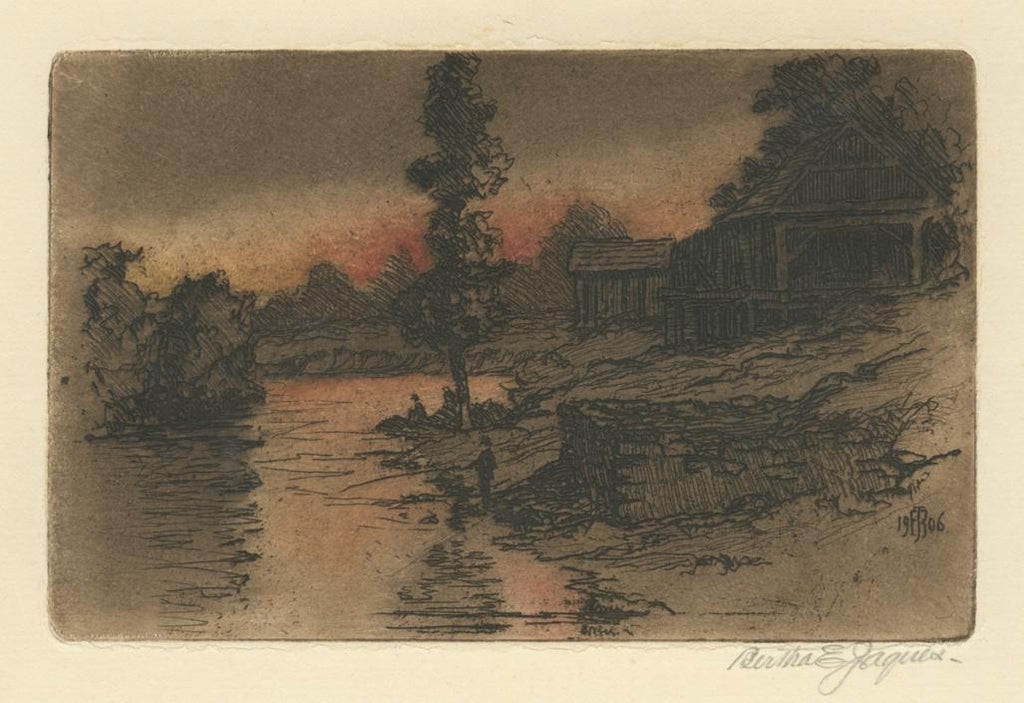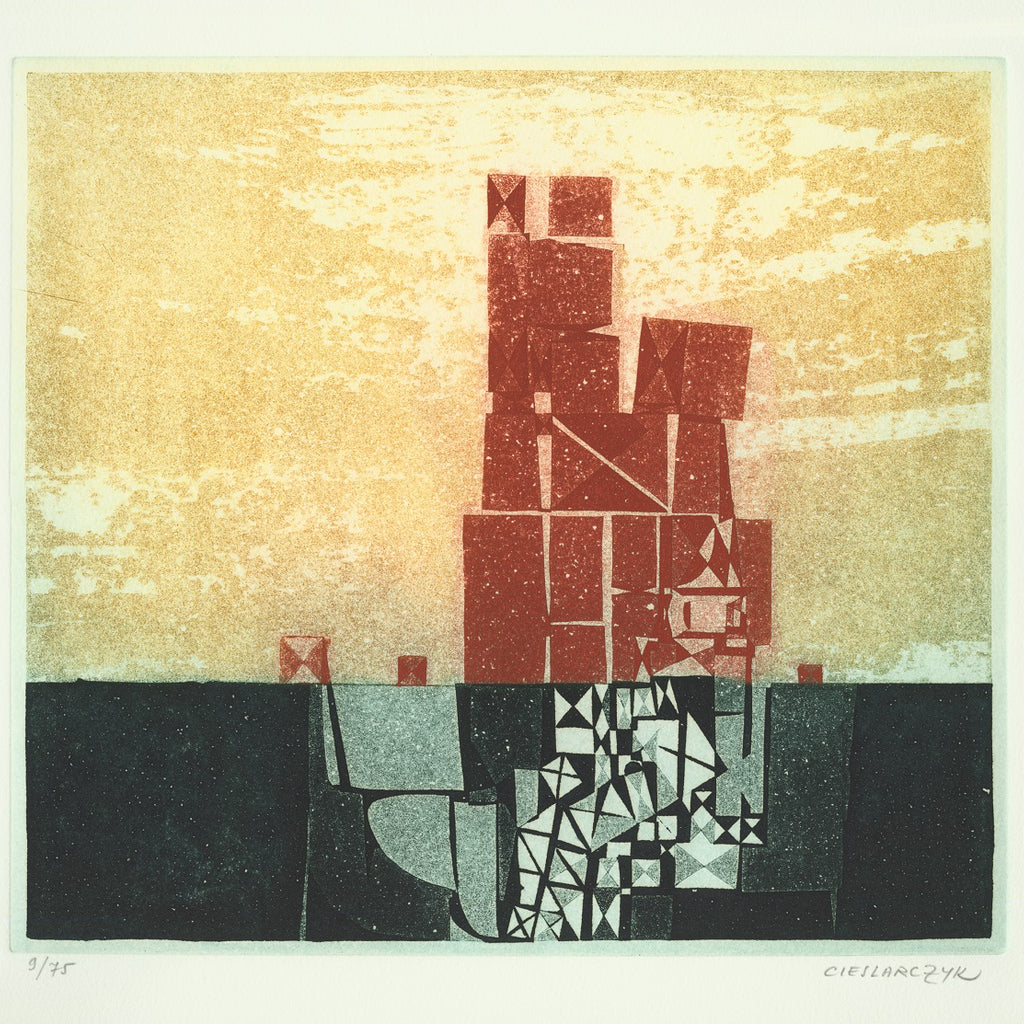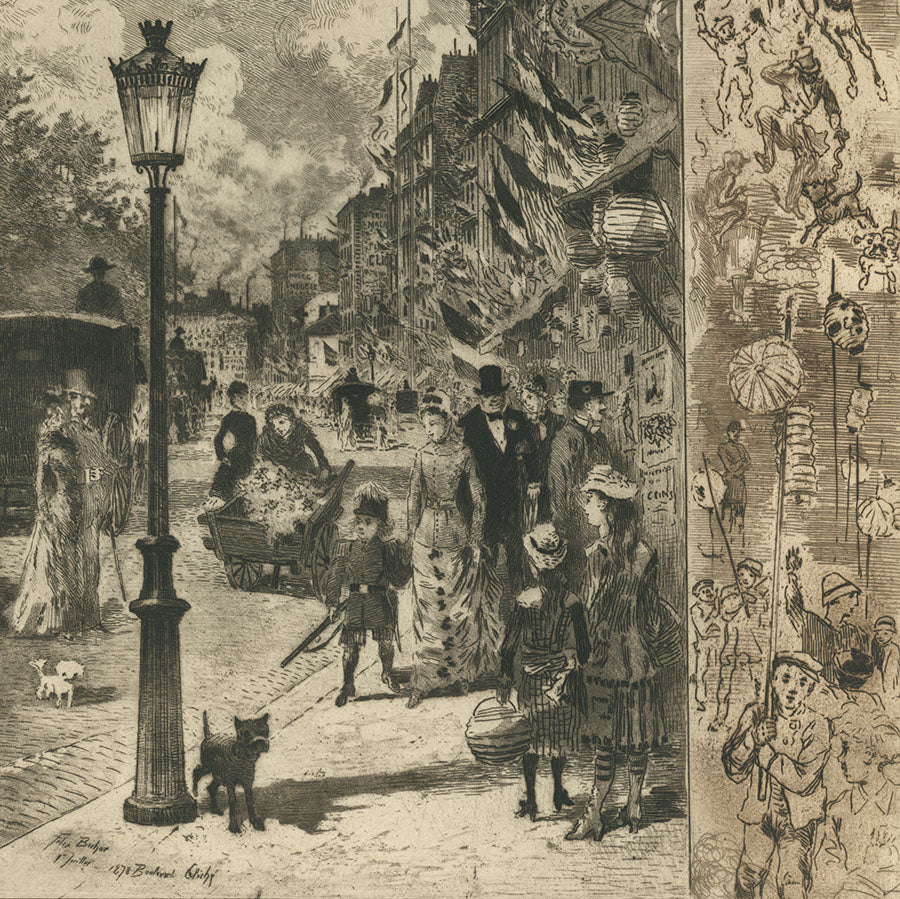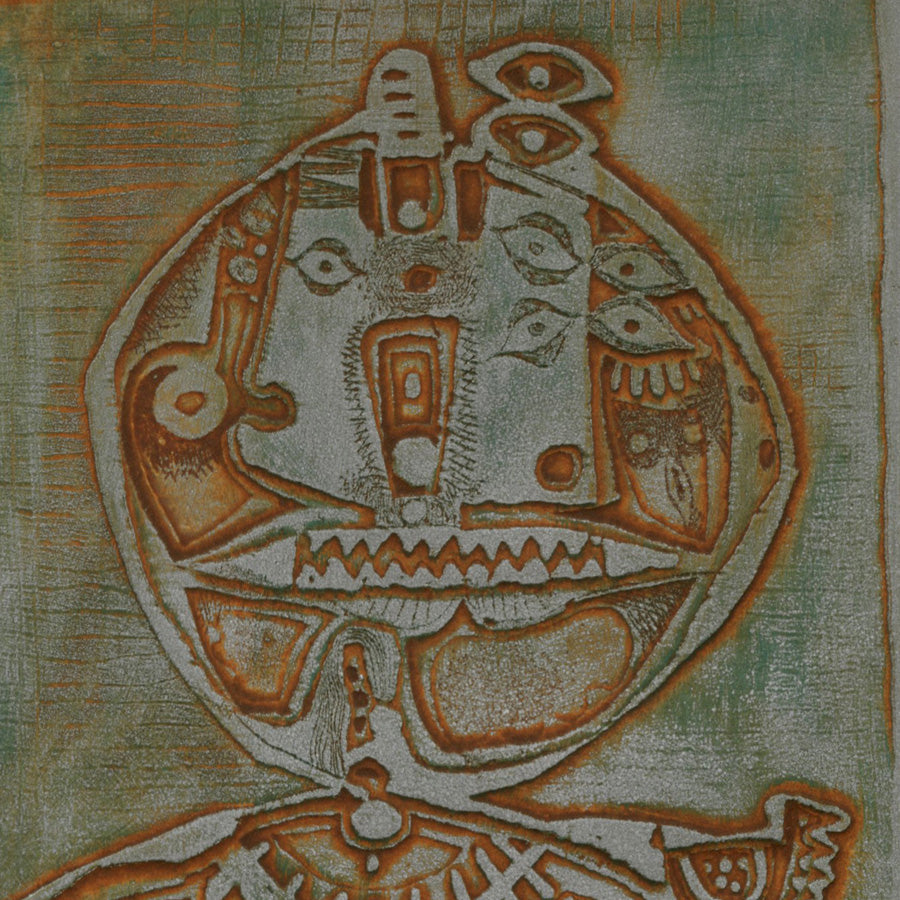 Sold
Sold
Fishermen by a River at Dusk
JAQUES, Bertha
Color etching printed on thick wove paper. Edition unknown, probably small. Signed in pencil.
While printmakers have always wanted to present some shading or grayscale in their work, until the discovery of aquatint in the 17th century, doing so was technically very challenging. And with a few notable exceptions, such as in the etchings of Francisco Goya, aquatint, this most painterly of intaglio techniques, remained unpracticed by most printmakers. Aquatint started to gain popularity in the latter part of the 19th century, likely as etching was being rediscovered by Impressionists. These artists were often eager to replicate in their prints the atmospheric qualities found in their paintings. Aquatint, with its granular texture, lends itself to effects that offer an endless range of shading, both in black and white and in color. Because it was practiced so masterfully by artists of the Modern Era, we here at Armstrong Fine Art are true “suckers” for a finely crafted aquatint. Here are a few we have, or have had in the past.
 Sold
Sold
Color etching printed on thick wove paper. Edition unknown, probably small. Signed in pencil.
 Sold
Sold
L’Eternel Naufrage (original French title) Color aquatint on wove paper.Edition of 75.Signed and numbered “9/75” in pencil. TO SEE MORE WORKS OF AR...
View full details Sold
Sold
Au Bal (original French title) Color aquatint on wove paper.Small edition of color variants, rare.Signed and numbered in pencil. We have had this ...
View full details Sold
Sold
FELIX BUHOT (1847-1898) National Holiday on the Boulevard de Clichy La Fête nationale au Boulevard Clichy (original French title) Etching, aquatint...
View full details Sold
Sold
Color intaglio viscosity print, with mica ink, printed on wove paper.Edition of 120.Signed and numbered in pencil. The artist obtains effects that ...
View full details Sold
Sold
En Bretagne, Eaux-Fortes et Lithographies par Maufra (original French title) Color etching & aquatint on wove paper, 1894.Refs: BN-IFF 11.2; Ca...
View full details Sold
Sold
Color viscosity intaglio on Arches wove paper.Stated edition of 10, but according to the artist likely not printed in full.Printed while the artist...
View full details
"Convoi Funèbre au Boulevard de Clichy" (original French title) Etching, aquatint, roulette, and touches of drypoint printed in color, from three p...
View full details Sold
Sold
La Fête National de 30 Juin au Boulevard Clichy (original French title) Etching and aquatint printed in two tones on wove paper, 1878.Reference: Bo...
View full detailsPlease sign up for our newsletter
Email: info@armstrongfineart.com
Phone: 773-887-6776
1200 West 35th Street, #186
Chicago, IL 60609
Copyright © 2025 Armstrong Fine Art.
Development by Alo Agency. Powered by Shopify
